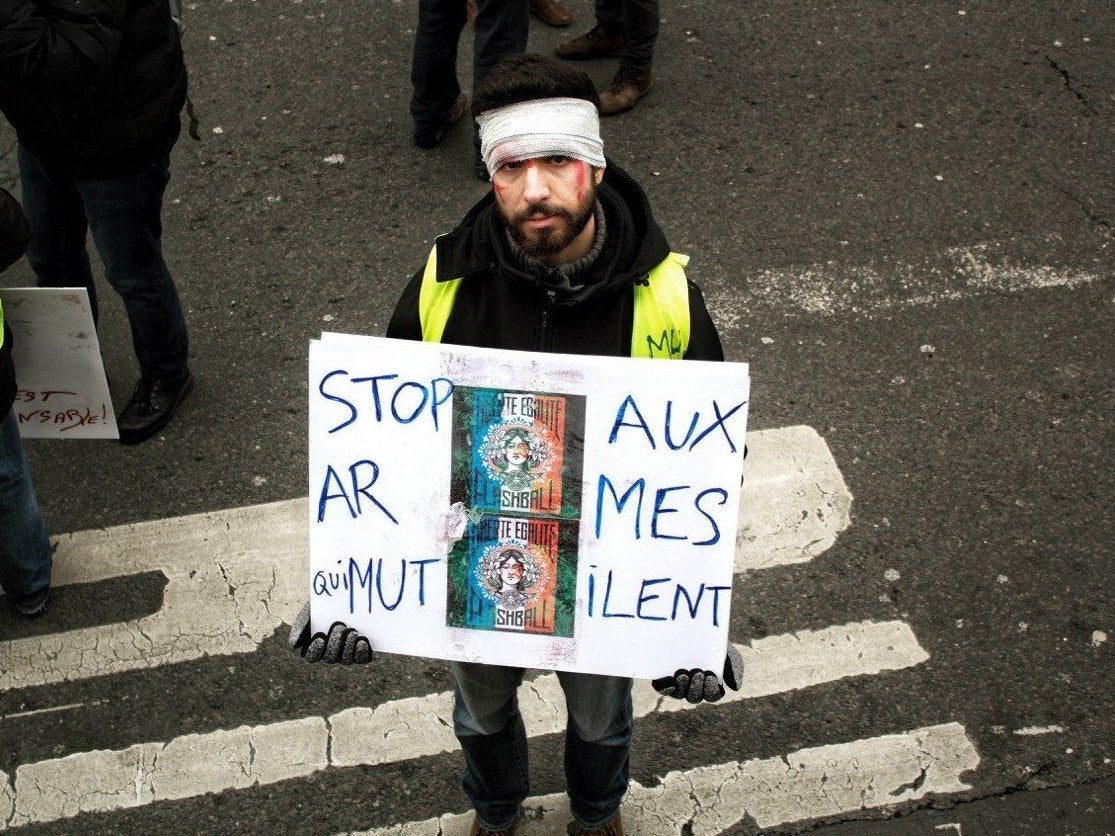Inside the gilets jaunes protests: ‘The Great March of the Wounded’
Angela Christofilou walks the streets of Paris to capture images of a movement that grew on the feeling that everyone was simply tired of politics

Your support helps us to tell the story
From reproductive rights to climate change to Big Tech, The Independent is on the ground when the story is developing. Whether it's investigating the financials of Elon Musk's pro-Trump PAC or producing our latest documentary, 'The A Word', which shines a light on the American women fighting for reproductive rights, we know how important it is to parse out the facts from the messaging.
At such a critical moment in US history, we need reporters on the ground. Your donation allows us to keep sending journalists to speak to both sides of the story.
The Independent is trusted by Americans across the entire political spectrum. And unlike many other quality news outlets, we choose not to lock Americans out of our reporting and analysis with paywalls. We believe quality journalism should be available to everyone, paid for by those who can afford it.
Your support makes all the difference.“Venez avec Nous” (Come with Us) read a banner held by a woman walking past me as she headed towards Place de la Bastille in Paris last Saturday. At that point I grabbed my camera and went with them. It was Act XII (the twelfth day) of the gilets jaunes (yellow vests): “The Great March of the Wounded”.
The focus of this particular protest was to denounce police brutality and their use of “flashballs” – anti-riot rubber or foam pellet launchers, specifically the LBD-40. In honour of those injured by riot police over the course of the past two months of the yellow vest movement, many protesters covered themselves with a bandage over their eye, plasters and fake blood.
Many gilets jaunes were happy to share their views and experiences with me while others kindly stepped in to interpret when needed.
They spoke about how they felt the protests have united people in France and that they felt empowered as a whole.
What started as a protest on fuel tax has now become a movement with a wider anti-government sentiment.
Many spoke of how wages are so low for them they cannot make ends meet at the end of every month, while others who consider themselves financially stable also turn up to the protests expressing support and solidarity with the yellow vests nearly every Saturday since November.
I learned that they see themselves as citizens before anything else and as such at the protests you will find people from both the left and right wing, even the extremes. It’s a movement that grew on the feeling that everyone was simply tired of politics.
My experience of photographing protests is mainly limited to the UK and demonstrations here at home usually end – in comparison to the French – somewhat peacefully around Trafalgar or Parliament Square just in time for tea.
In Paris, a large number of the protesters who attended the march carried along with them some form of protective gear such as goggles, helmets and masks.
There have been so far up to 11 deaths and hundreds of injuries linked to the protests and clashes with the police.
I was in the middle of photographing a sign on a wall that read “Pouvoir au People” (Power to the People) when a team of first aid volunteers walked by. They spontaneously teamed up during Act V and formed “The Street Angels”.
The focus of the group is on the wounded and they voluntarily assist anyone who may get injured during the protests. Speaking with Remi, a member of the group, he stated that the team have treated all kinds of wounds during the protests, from minor to more severe ones.
In Place de la Bastille the atmosphere was peaceful. We then marched towards the final destination, Place de la République.
It wasn’t long before we reached the square when I was advised that “if you have a mask or goggles with you, you should get them out and have them ready – just in case”.
The police arrived and closed in on us. At that point I walked into a cafe to charge my phone. When I came out, the police had formed a line right next to me and it was impossible to breathe.
Just then, a group of people who I had met earlier in the march turned to me and said “Come with us.” They headed for the metro and I followed shortly after.
For more of Angela Christofilou’s work you can visit her website here
Join our commenting forum
Join thought-provoking conversations, follow other Independent readers and see their replies
Comments